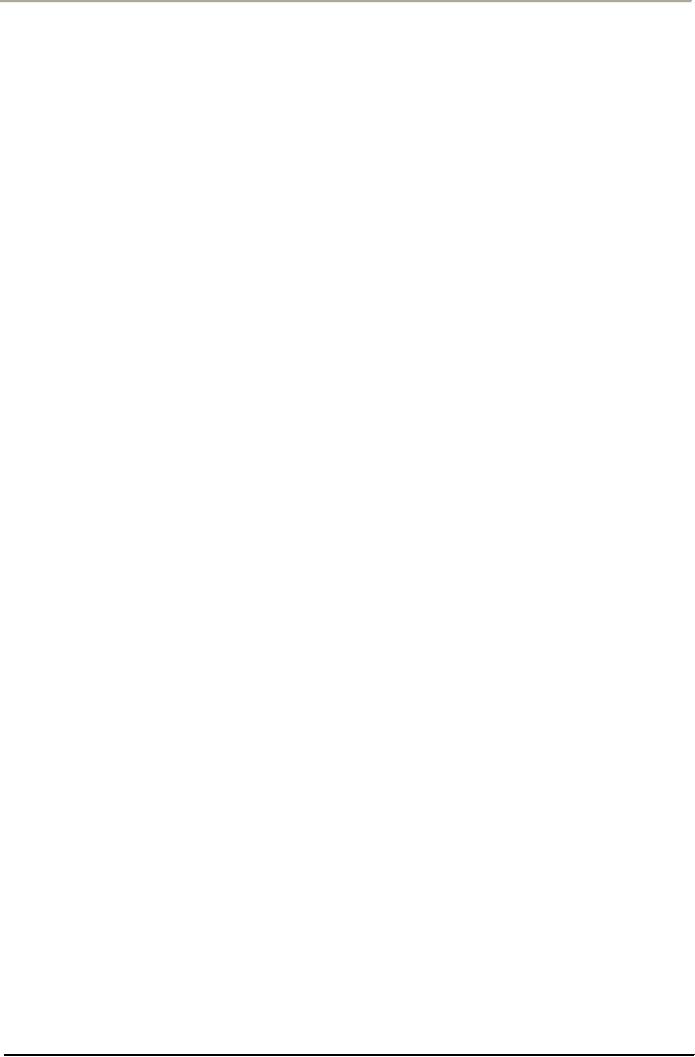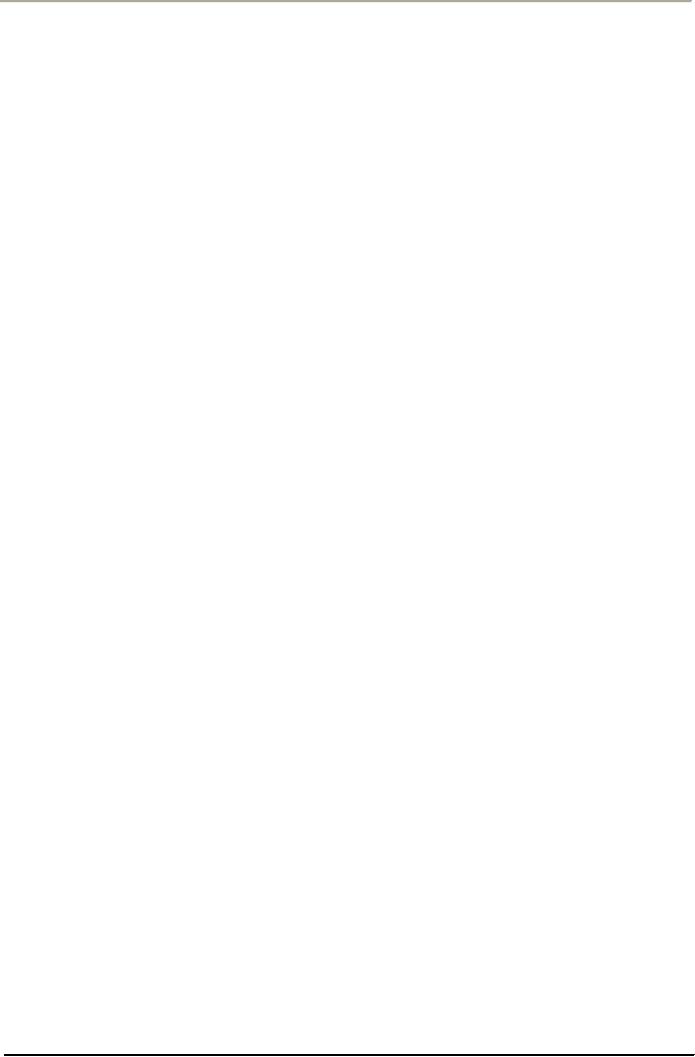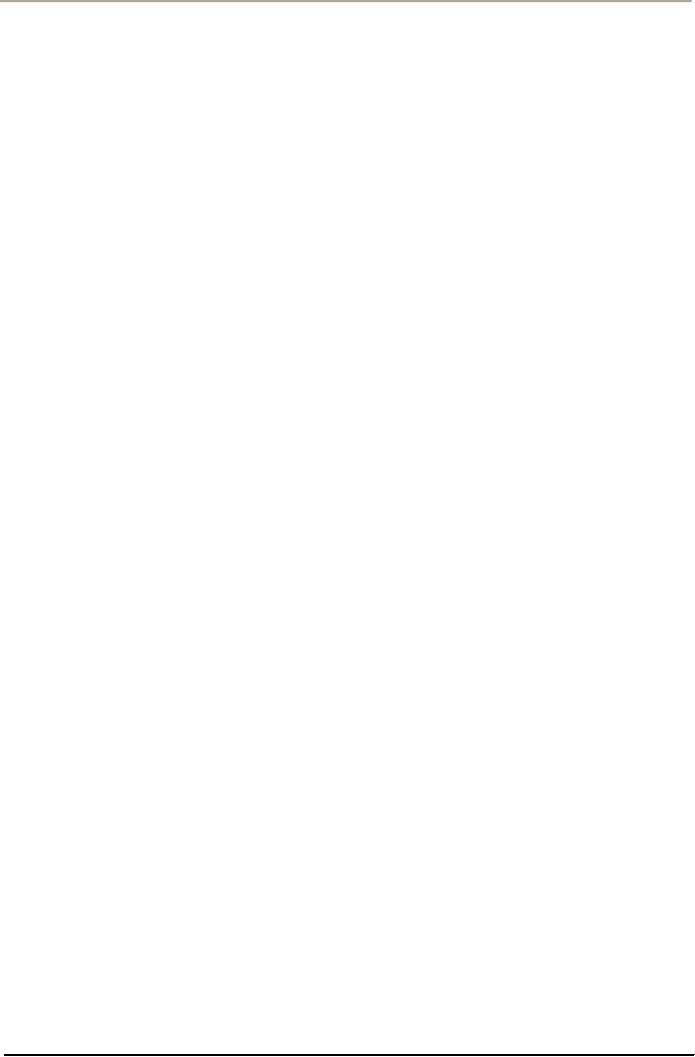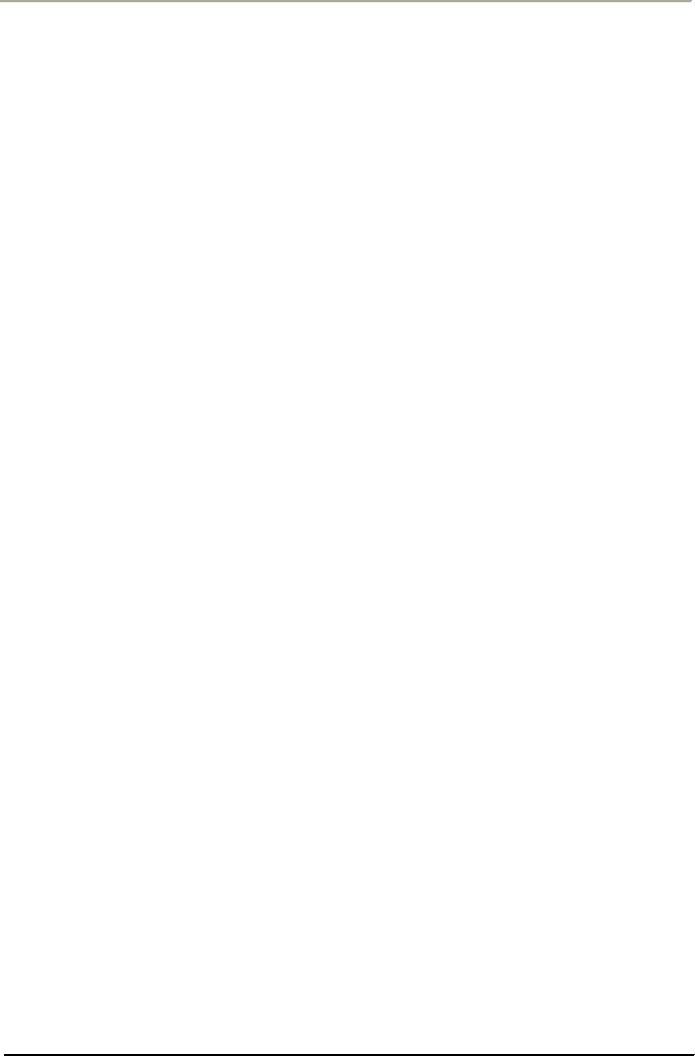 |

Total
Quality Management
MGT510
VU
Lesson
# 26
ISO
9001(2000) QMS (CLAUSE # 7)
CONTROL OF PRODUCTION AND
SERVICES
7.5
Production
and Service Operations
ISO
9001:2000 - Quality Management
Systems - Requirements
7.5
Production
and Service Operations
7.5.1
Control of Production and Service
Provision
The
organization shall plan and
carry out production and
service provision under controlled
conditions.
Controlled
conditions shall include, as
applicable.
a)
The
availability of information that the
characteristics of the product;
b)
The
availability of work instructions, as
necessary,
c)
The
use of suitable
equipment,
d)
The
availability and use of monitoring and
measuring devices,
e)
The
implementation of monitoring and
measurement, and
f)
The
implementation of release, delivery and
post-delivery activities.
7.5.1
Control
of Production and Service
Provision
The
organization should identify requirements
for operations that realize products or
deliver services in
order
to ensure compliance with
specifications and satisfy the
needs and expectations of
interested
parties.
To meet these needs and
expectations, the organization should
review its
·
ability
to comply with contractual
requirements,
·
training
and competence of people,
·
communication.
·
problem
prevention, and
·
relevant
statutory and regulatory
requirements.
Further
considerations may include .capacity
planning,
·
logistics.
·
intended
use,
·
post-
realization activities.
·
preservation.
·
training
required, A
·
product
flow and yield.
·
automation,
and
·
electronic
monitoring.
The
infrastructure should be appropriately
maintained and adequately protected in and between
use in
order
to maintain operational
capability.
ISO
9001:2000-Quality Management Systems
-Requirements
7.5.2
Validation
of Processes for Production and
Service Provision
The
organization shall validate
any processes for production
and service provision where the
resulting
output
cannot be verified by subsequent
monitoring or measurement. This
includes any processes
where
deficiencies
become apparent only after the
product is in use or the service has
been delivered.
Validation
shall demonstrate the ability of
these processes to achieve planned
results.
The
organization shall establish arrangement
for these processes
including, as applicable
110

Total
Quality Management
MGT510
VU
a)
Defined
criteria for review and
approval of the processes,
b)
Approval
of equipment and qualification of
personnel,
c)
Use
of specific methods and
procedures,
d)
Requirements
for records (see 4.2.4),
and
e)
Revalidation.
ISO
9001:2000- Quality Management
Systems -Requirements
7.5.3
Identification and
Traceability
Where
appropriate, the organization shall
identify the product by suitable
means throughout
product
realization.
To organization shall identify the
product status respect to
monitoring and measurement
requirements.
Where traceability is a requirement, the
organization shall control and record the
unique
identification
of the product
NOTE
in
some industry sectors,
configuration management is a means by
which identification and
traceability
are maintained.
7.5.3
Identification
and Traceability
The
organization should establish a process
and documentation for identification and
traceability for
control
of products to satisfy customer and other
interested party requirements.
The
need for identification and
traceability may be due to
·
status
of products, including component
parts,
·
contract
requirements,
·
relevant
statutory and regulatory
requirements,
·
intended
use or application
·
hazardous
materials, and
·
risk
mitigation.
ISO
9001:2000- Quality Management
Systems -Requirements
7.5.4
Customer Property
The
organization shall exercise
care with customer property
while it is under the organization's
control
or
being used by the organization.
The organization shall
identify, verify, protect
and safeguard
customer
property provided for use or
incorporation into the product. If
any customer property is
lost,
damaged
or otherwise found to be unsuitable
for use, this shall be
reported to the customer and
records
maintained
NOTE
Customer
property can include
intellectual property.
7.5.4
Customer
Property
The
organization should identify
responsibilities in relation to property
and other assets owned
by
customers
and other interested parties and under
the control of the organization, in order
to protect the
value
of the property. Examples of such
property are:
·
ingredients
or components supplied for
inclusion in a product,
·
product
supplied for repair, maintenance or
upgrading,
·
packaging
materials supplied directly by the
customer,
·
customer
materials handled by service operations such as
storage,
·
services
supplied on behalf of the customer
such as transport of customer property to
a third
party,
·
protection
of customer intellectual property
including specifications, such as
drawings.
111

Total
Quality Management
MGT510
VU
ISO
9001:2000 - Quality Management
Systems - Requirements
7.5.5
Preservation of Product
The
organization shall preserve
conformity of product during
internal processing and delivery to
the
intended
destination. This preservation
shall include identification,
handling, packaging, storage
and
protection.
Preservation shall also apply to the
constituent parts of a
product.
7.5.5
Preservation
of Product
The
organization should define and
implement processes for
handling, packaging, storage,
preservation
and
delivery that are designed to
prevent damage, deterioration or
misuse during internal
processing and
final
delivery of the product. The
organization should consider the need
for any special requirements
arising
from the nature of the product. Special
requirements may be associated with
software, electronic
media,
hazardous materials, specialist personnel, and products or
materials which are unique
or
irreplaceable.
The organization should
identify resources needed to
maintain the product throughout
its
life
cycle to prevent damage,
deterioration, or misuse. The
organization should communicate
information
to the interested parties involved about the
resources needed to facilitate
preservation
actions.
ISO
9001:2000 - Quality Management
Systems Requirements
7.6
Control of Monitoring and
Measuring Devices
The
organization shall determine the
monitoring and measurement to be
undertaken and the monitoring
and
measuring devices needed to provide evidence of
conformity of product to determined
requirements
The
organization shall establish processes to
ensure that monitoring and
measurement can be carried
out
and
are carried out in a manner
that is consistent with the
monitoring and measurement
requirements.
Where
necessary to ensure valid
results, measuring equipment
shall
a)
Be
calibrated or verified at specified
intervals, or prior to use, against
measurement standards
traceable
to international or national measurement
standards; where no such standards
exist, the
basis
used for calibration or
verification shall be recorded;
b)
Be
adjusted or re-adjusted as necessary;
c)
Be
identified to enable the calibration
status to be determined;
d)
Be
safeguarded from adjustments
that would invalidate the
measurement result;
e)
Be
protected from damage and deterioration
during handling, maintenance and
storage.
In
addition, the organization shall
assess and record the validity of the
previous measuring results
when
the
equipment is found not to
conform to requirements. The organization
shall take appropriate
action
on
the equipment and any product
affected. Records of the results of
calibration and verification shall
be
maintained.
When
used in the monitoring and measurement of
specified requirements, the ability of
computer
software
to satisfy the intended application
shall be confirmed. This
shall be undertaken prior to
initial
use
and reconfirmed as
necessary.
7.6
Control
of Measuring and Monitoring
Devices
The
organization should define and
implement methodologies for
verification of products and
validation
of
processes to ensure interested party
satisfaction. These methodologies could
include surveys,
simulations,
measurement and monitoring.
Measuring
and monitoring devices can be used
for the verification of outputs of
processes against
specified
requirements. The organization should
ensure that where measuring and
monitoring devices
are
used fur verification, they
are calibrated and
maintained to accepted standards,
giving confidence to
the
results.
112

Total
Quality Management
MGT510
VU
The
organization should consider other
means to eliminate all
potential errors from
processes (known as
"fool-proofing"),
for verification of process outputs to
minimize the need for
control of measurement
and
monitoring devices, and to add value for
interested parties.
113
Table of Contents:
- OVERVIEW OF QUALITY MANAGEMENT:PROFESSIONAL MANAGERIAL ERA (1950)
- TOTAL QUALITY MANAGEMENT AND TOTAL ORGANIZATION EXCELLENCE:Measurement
- INTEGRATING PEOPLE AND PERFORMANCE THROUGH QUALITY MANAGEMENT
- FUNDAMENTALS OF TOTAL QUALITY AND RATERS VIEW:The Concept of Quality
- TOTAL QUALITY MANAGEMENT AND GLOBAL COMPETITIVE ADVANTAGE:Customer Focus
- TOTAL QUALITY MANAGEMENT AND PLANNING FOR QUALITY AT OFFICE
- LEADERS IN QUALITY REVOLUTION AND DEFINING FOR QUALITY:User-Based
- TAGUCHI LOSS FUNCTION AND QUALITY MANAGEMENT
- WTO, SHIFTING FOCUS OF CORPORATE CULTURE AND ORGANIZATIONAL MODEL OF MANAGEMENT
- HISTORY OF QUALITY MANAGEMENT PARADIGMS
- DEFINING QUALITY, QUALITY MANAGEMENT AND LINKS WITH PROFITABILITY
- LEARNING ABOUT QUALITY AND APPROACHES FROM QUALITY PHILOSOPHIES
- TOTAL QUALITY MANAGEMENT THEORIES EDWARD DEMING’S SYSTEM OF PROFOUND KNOWLEDGE
- DEMING’S PHILOSOPHY AND 14 POINTS FOR MANAGEMENT:The cost of quality
- DEMING CYCLE AND QUALITY TRILOGY:Juran’s Three Basic Steps to Progress
- JURAN AND CROSBY ON QUALITY AND QUALITY IS FREE:Quality Planning
- CROSBY’S CONCEPT OF COST OF QUALITY:Cost of Quality Attitude
- COSTS OF QUALITY AND RETURN ON QUALITY:Total Quality Costs
- OVERVIEW OF TOTAL QUALITY APPROACHES:The Future of Quality Management
- BUSINESS EXCELLENCE MODELS:Excellence in all functions
- DESIGNING ORGANIZATIONS FOR QUALITY:Customer focus, Leadership
- DEVELOPING ISO QMS FOR CERTIFICATION:Process approach
- ISO 9001(2000) QMS MANAGEMENT RESPONSIBILITY:Issues to be Considered
- ISO 9001(2000) QMS (CLAUSE # 6) RESOURCES MANAGEMENT:Training and Awareness
- ISO 9001(2000) (CLAUSE # 7) PRODUCT REALIZATION AND CUSTOMER RELATED PROCESSES
- ISO 9001(2000) QMS (CLAUSE # 7) CONTROL OF PRODUCTION AND SERVICES
- ISO 9001(2000) QMS (CLAUSE # 8) MEASUREMENT, ANALYSIS, AND IMPROVEMENT
- QUALITY IN SOFTWARE SECTOR AND MATURITY LEVELS:Structure of CMM
- INSTALLING AN ISO -9001 QM SYSTEM:Implementation, Audit and Registration
- CREATING BUSINESS EXCELLENCE:Elements of a Total Quality Culture
- CREATING QUALITY AT STRATEGIC, TACTICAL AND OPERATIONAL LEVEL
- BIG Q AND SMALL q LEADERSHIP FOR QUALITY:The roles of a Quality Leader
- STRATEGIC PLANNING FOR QUALITY AND ADVANCED QUALITY MANAGEMENT TOOLS
- HOSHIN KANRI AND STRATEGIC POLICY DEPLOYMENT:Senior Management
- QUALITY FUNCTION DEPLOYMENT (QFD) AND OTHER TOOLS FOR IMPLEMENTATION
- BASIC SQC IMPROVEMENT TOOLS:TOTAL QUALITY TOOLS DEFINED
- HOW QUALITY IS IMPLEMENTED? A DIALOGUE WITH A QUALITY MANAGER!
- CAUSE AND EFFECT DIAGRAM AND OTHER TOOLS OF QUALITY:Control Charts
- STATISTICAL PROCESS CONTROL (SPC) FOR CONTINUAL QUALITY IMPROVEMENT
- STATISTICAL PROCESS CONTROL….CONTD:Control Charts
- BUILDING QUALITY THROUGH SPC:Types of Data, Defining Process Capability
- AN INTERVIEW SESSION WITH OFFICERS OF A CMMI LEVEL 5 QUALITY IT PAKISTANI COMPANY
- TEAMWORK CULTURE FOR TQM:Steering Committees, Natural Work Teams
- UNDERSTANDING EMPOWERMENT FOR TQ AND CUSTOMER-SUPPLIER RELATIONSHIP
- CSR, INNOVATION, KNOWLEDGE MANAGEMENT AND INTRODUCING LEARNING ORGANIZATION